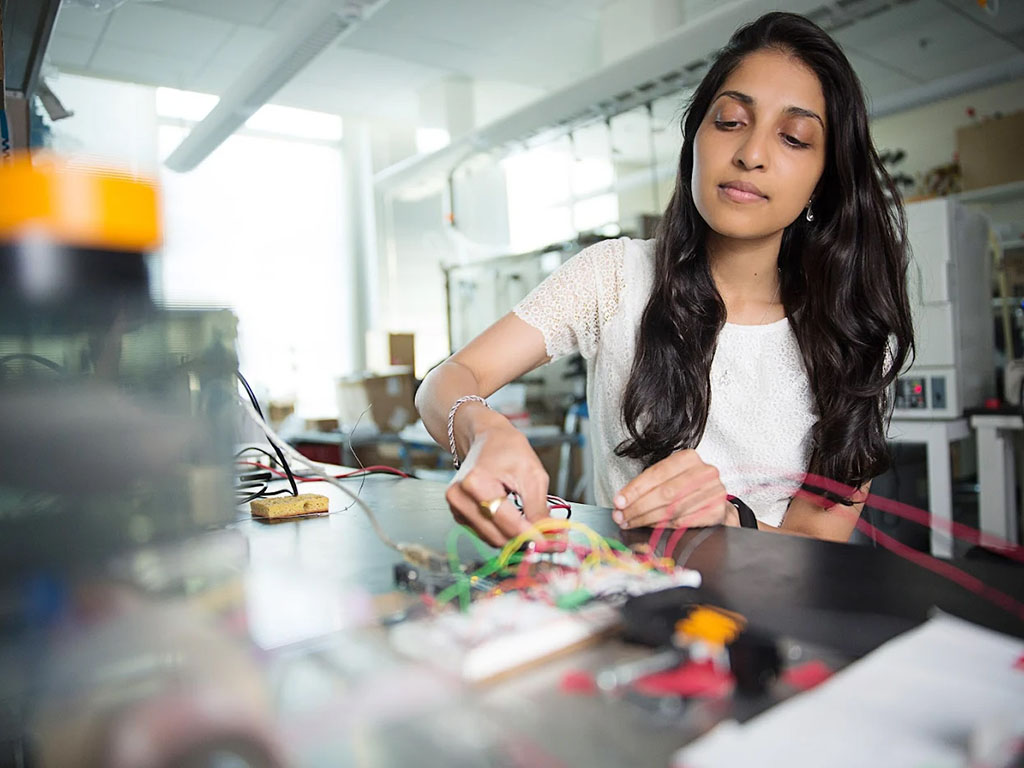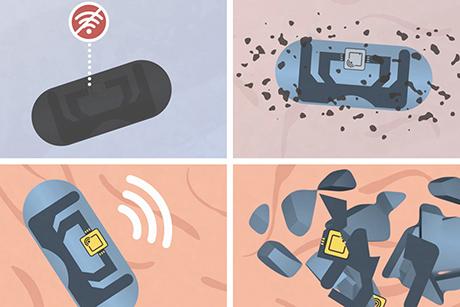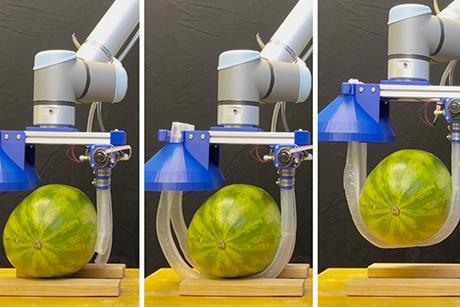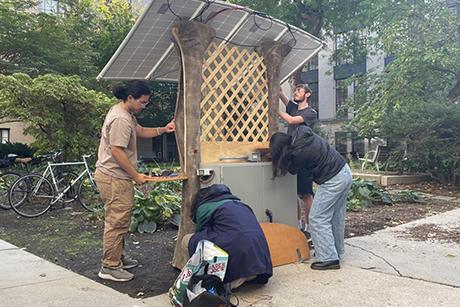Ritu Raman Is an Architect of Muscle and Nerve
RITU RAMAN VIEWS HUMAN BEINGS AS “SOFT AND SQUISHY AND EASY TO DAMAGE.” But she also regards our bodies as flesh-and-blood miracles, capable of astonishing feats of adaptability, sensing, self-organization, and resilience. At her lab, Raman, the d’Arbeloff Career Development Professor in Engineering Design and assistant professor of mechanical engineering, is developing a biofabricated platform that can leverage the remarkable properties of living cells to address devastating injuries, as well as to create useful biohybrid devices. “I am learning to build with biology using cells as functional components,” she says.
Raman’s lab is focused on the motor control system, which governs how we plan and execute movement. Using her laboratory models of working muscle and nerve cells, Raman engineers, molds, and scaffolds tissue, “creating new design rules,” she says. This work, although in its infancy, puts her on a path toward restoring mobility to someone who’s lost it and creating new kinds of robots, ones that “can do things nonbiological robots can’t,” she says.
Observing nature’s mechanisms
Going about our daily lives, we take for granted the complex machinery required to grasp an object or run and jump. Yet neurons, in constant conversation with skeletal muscle tissue, make all such movements possible, allowing us to sense changes in the physical world and to respond dynamically. To an engineer, these neuromuscular systems are nature’s actuators—mechanical devices that convert energy to motion. Through reverse engineering, Raman is fabricating models of motor control actuators.
“Like Leonardo da Vinci looking at a bird, I’m trying to pick apart the structure created by nature and study what happens when it is diseased or injured,” says Raman. Based on such close observation, Raman has fabricated bio-actuators that are revealing what unfolds at the cellular level when motor control systems are subjected to trauma and what therapies might best speed recovery.
Working with mouse stem cells, which she induces to grow into layers of muscle cells, Raman cultivates a sheath of muscle fibers that she places over two pillars. “It’s like a stretchy, pink rubber band,” she says. Normal muscle cells contract in response to electric signals from nerves. Raman’s genetically engineered muscle twitches in reaction to light, contracting and bending the pillars. Her research was the first to demonstrate that light stimulation could be used to exercise muscle. By measuring the force exerted by her band on these pillars, she can gather data on the behavior of muscle tissue in normal conditions, when under stress and when deeply damaged.
In recent, unpublished research, Raman’s muscle studies have revealed that exercise triggered by a light probe helps accelerate recovery after injury. When she grafted this tissue into a live mouse with a muscle wound, Raman was able to show that a regimen of light-activated exercise yielded faster recovery after damage.
“Our key insight is that targeted exercise of this graft enhances recovery because it makes newly added muscle stronger, and it enables communication between the new muscle and surrounding cells, which assists with integration into the surrounding tissue,” she says. Raman now hopes to determine what specific signals muscle cells might be sending to each other and to neighboring cells. She is also experimenting with genetically engineered nerve cells to learn how they form connections with muscles over time and what happens when this connection is cut or crushed.
Raman is set on translating her laboratory findings to real-world applications. “After we gain specific knowledge of the mechanism by which newly added cells function and how targeted exercise can optimize recovery in different wounds, I see creative ways of applying these techniques to humans,” she says.
Designing by hand
While Raman works with 3-D printers, computational models, and computer-aided design and manufacturing technologies, she always starts her biofabrication designs by hand. “Even though at the end of the day there is a fancy render, the easiest way is pen and paper,” says Raman. “I go back to that all the time in my work.” She learned drawing from her grandfather and parents, all engineers, who encouraged her to “draw something from every side, over and over, and then move to a more formal design.” Still, she says the real artist in the family is her mother, who provided illustrations for Raman’s recent book, Biofabrication (The MIT Press, 2021). “If I can’t draw something, I will FaceTime her, and she’ll draw it as I describe it to her.”
One design that has leaped off her sketchbook into animated existence is a robotic worm that uses biological tissues to move around. With her light-based stimulus, she can make this creature move in one direction, then turn and rotate. When it exercises, it gets stronger.
“This is interesting and important because, unlike traditional robots made out of metals, biological robots can heal and walk again,” says Raman.
What Raman calls “soft” robots may not only enter domains dangerous to humans, but through their sensory and motor capabilities, respond in real time to unpredictable conditions that require “informed decisions about moving in one versus another direction,” says Raman. Adaptable biohybrid devices could become stronger in challenging terrain, exerting more force, for example, or repairing themselves through exercise if injured in the field.
“You really need biological tissues when the situation is unpredictable, dynamically changing over a long time,” says Raman. Metal robots need large battery packs for force and motion. “Living cells just need sugar water and some amino acids—dense energy to power movement,” she says.
But creating something with a human-like metabolism, and even the capacity to scavenge for food, “is a long way away,” says Raman. From worm to fully functioning soft robot entails building multiple systems from scratch, she notes. Yet Raman believes the small steps she is taking in her lab today will make a positive impact in the world tomorrow. “Something we learn could play a role in the future by helping somebody move again, and we could be taking something out of a petri dish that will eventually become an untethered robot solving challenges in the world.”
Article Source: MIT's Spectrum




